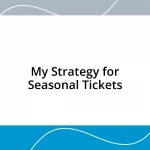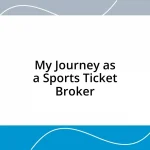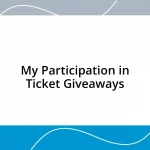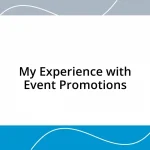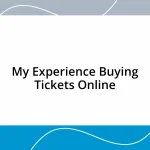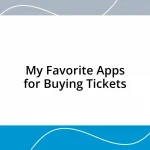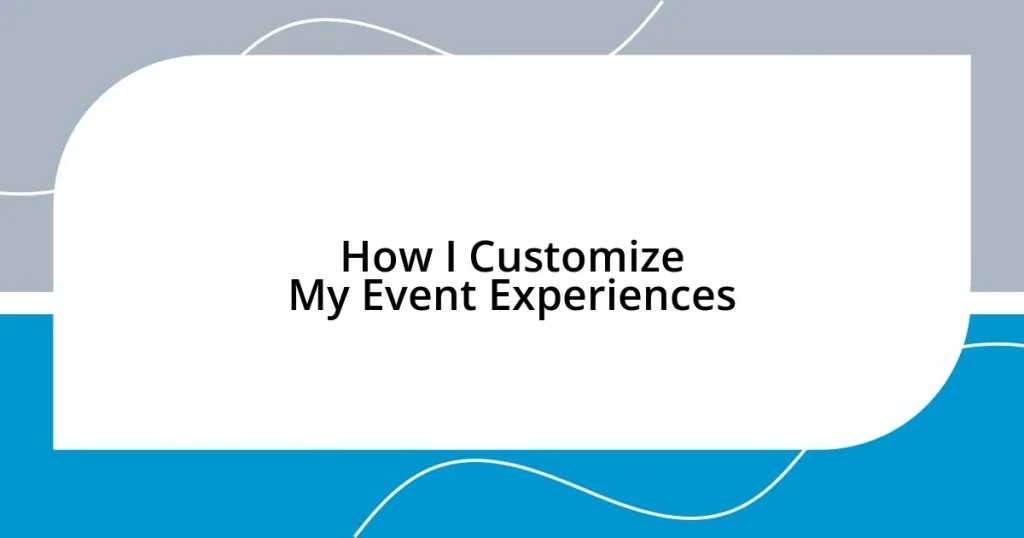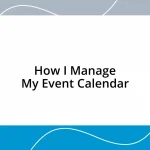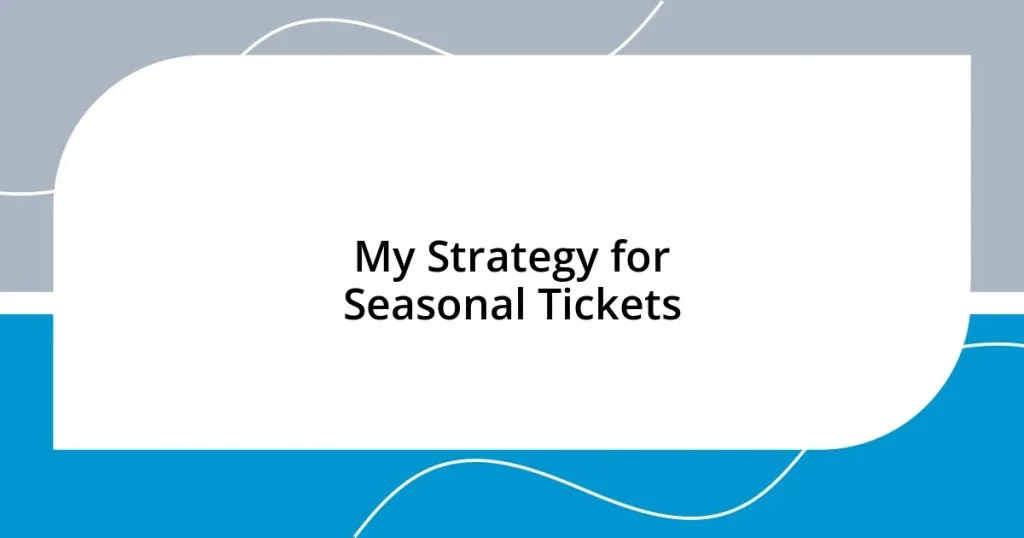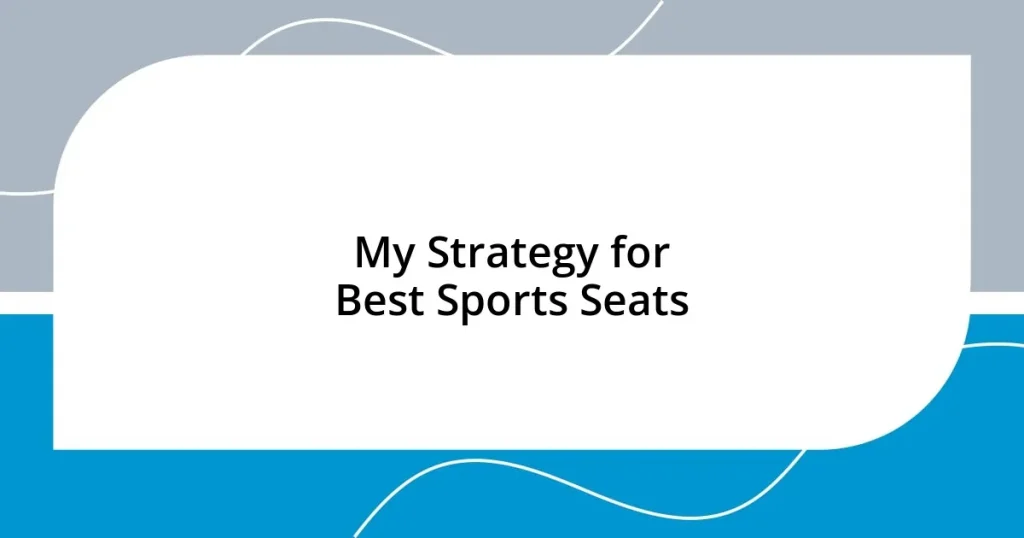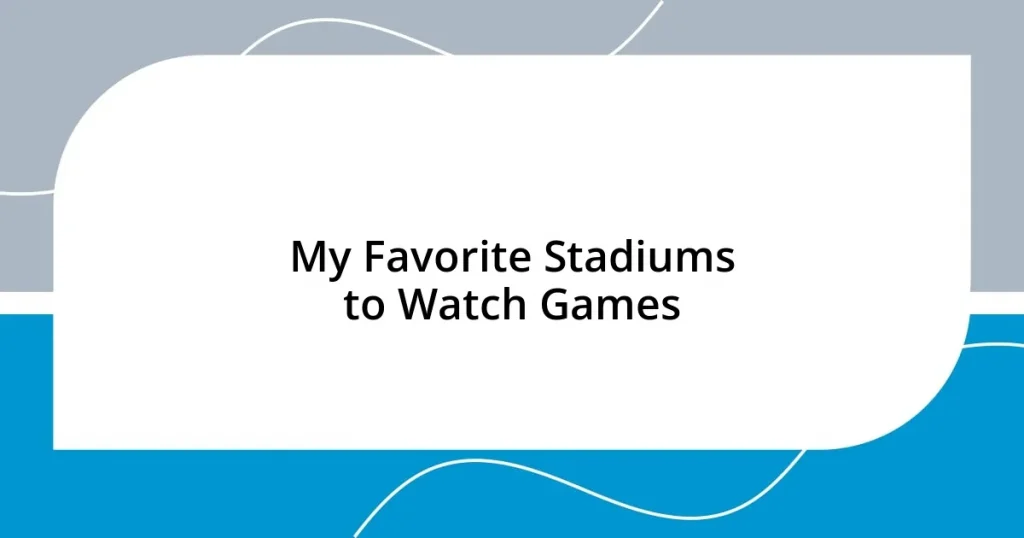Key takeaways:
- Event experience customization enhances attendee engagement and emotional connection, making events feel personal and memorable.
- Identifying audience preferences through surveys, analytics, and direct conversations shapes event content and increases satisfaction.
- Utilizing tools like event management software and interactive apps fosters participation and creates community dynamics during events.
- Measuring the impact of customization through feedback and retention rates reveals the long-term value of personalized experiences.
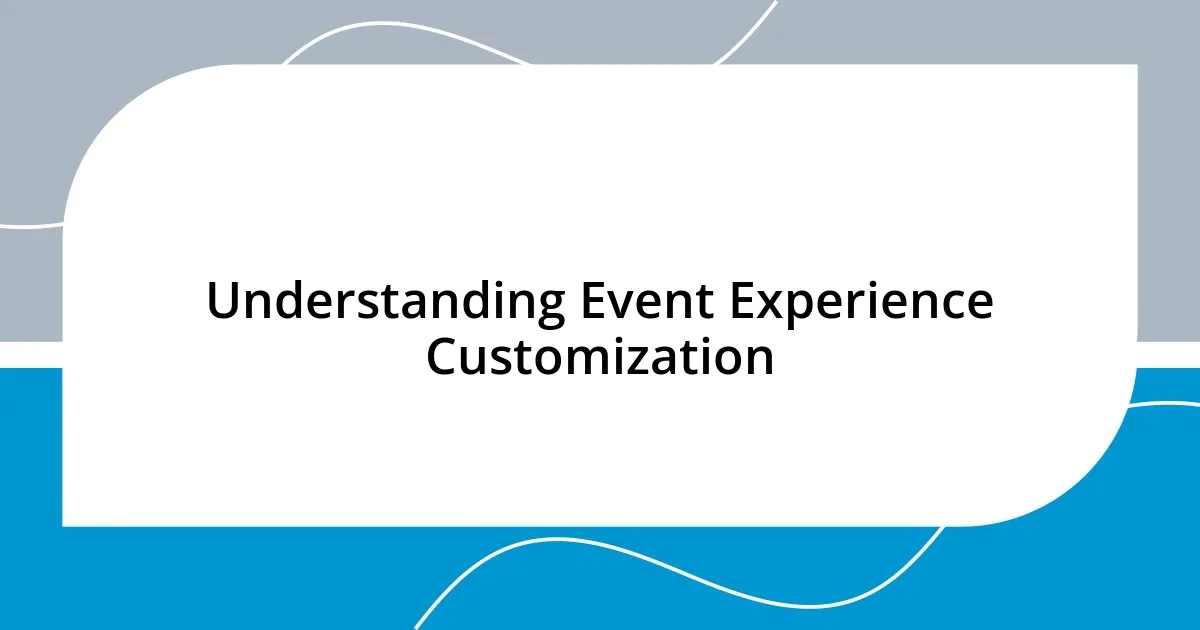
Understanding Event Experience Customization
Event experience customization is all about tailoring an experience to fit individual preferences and needs. I vividly remember attending a music festival where I could choose my music lineup and food vendors ahead of time. It made me feel in control, and that personal touch turned a simple event into a memorable day.
When I think of customization, I often reflect on what truly enhances my enjoyment. For instance, at a corporate retreat, having the option to participate in activities like yoga or team-building exercises allowed me to engage more deeply. Doesn’t it feel great when an event resonates with you, rather than just being a one-size-fits-all experience?
Furthermore, understanding the audience’s desires is critical in customization. I once helped organize a networking event where attendees could shape discussions based on their interests. The success of that event really highlighted how empowering it is for participants to have a say in what they want from an experience. How do you feel when you have the power to influence your surroundings? I believe it’s liberating.
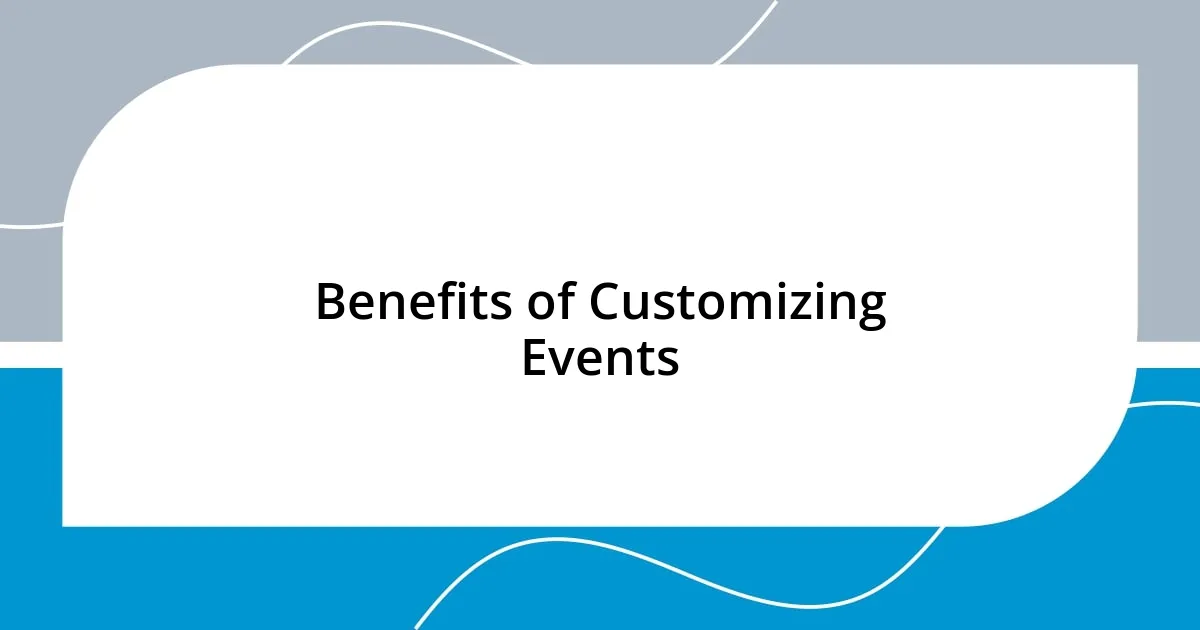
Benefits of Customizing Events
Customizing events brings a sense of ownership to attendees, making the experience uniquely theirs. I recall a wedding where the couple personalized every detail—from the music to the guestbook options. It created such a warm atmosphere, allowing everyone to feel deeply connected to the couple’s journey. When participants see their preferences reflected, they’re more likely to engage emotionally with the event.
Moreover, customization enhances overall satisfaction. I attended a conference where I could select breakout sessions that resonated with my interests. It was energizing! Rather than feeling like just another speaker in a sea of voices, I felt like an active participant in conversations that mattered to me. Have you ever walked away from an event thinking, “That was just for me”? That’s the kind of feeling customization can evoke.
Finally, tailored experiences can lead to higher retention rates and word-of-mouth referrals. After hosting a workshop where participants could choose their learning paths, I received feedback that many attendees were excited to share their positive experiences with friends and colleagues. When people feel like their input shapes an experience, they become ambassadors for future events. It’s like fostering a community around a shared passion.
| Benefit | Explanation |
|---|---|
| Emotional Connection | Customization fosters deep emotional ties, making attendees feel valued and connected. |
| Increased Engagement | Guests are more likely to participate actively when they influence the event’s direction. |
| Word of Mouth | Personalized experiences generate excitement and encourage attendees to relay their positive experiences. |
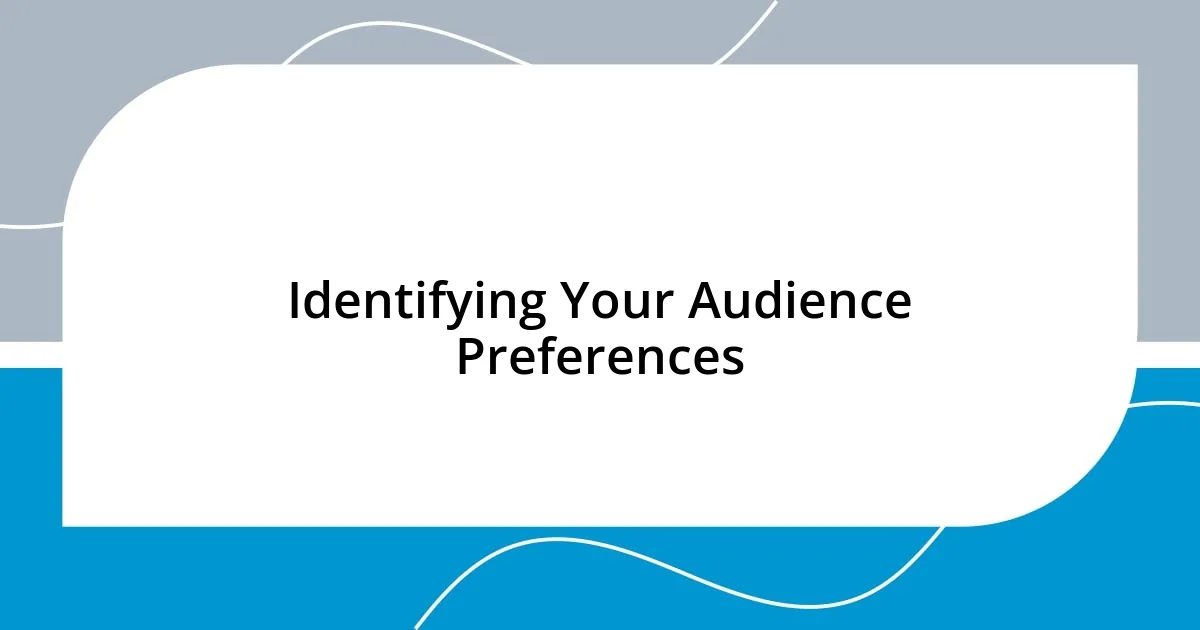
Identifying Your Audience Preferences
Identifying the preferences of your audience is a game changer. It’s like having a secret map that guides you through the wilderness of event planning. I recall being part of a panel discussion where we gathered feedback from potential attendees before finalizing the agenda. It dawned on me how crucial it was to focus on what they wanted to talk about. When people feel heard, their enthusiasm skyrockets, and they become more invested.
To effectively identify audience preferences, consider these approaches:
- Surveys and Polls: Simple tools to gauge interests and desires beforehand.
- Engagement Analytics: Review past events. What sessions had the most attendees or the most energy?
- Social Media Insights: Explore discussions and trends on platforms where your audience interacts.
- Direct Conversations: Nothing beats a chat to uncover personal preferences and stories.
Each method provides valuable insights that guide your customization efforts, making participants feel understood and appreciated.
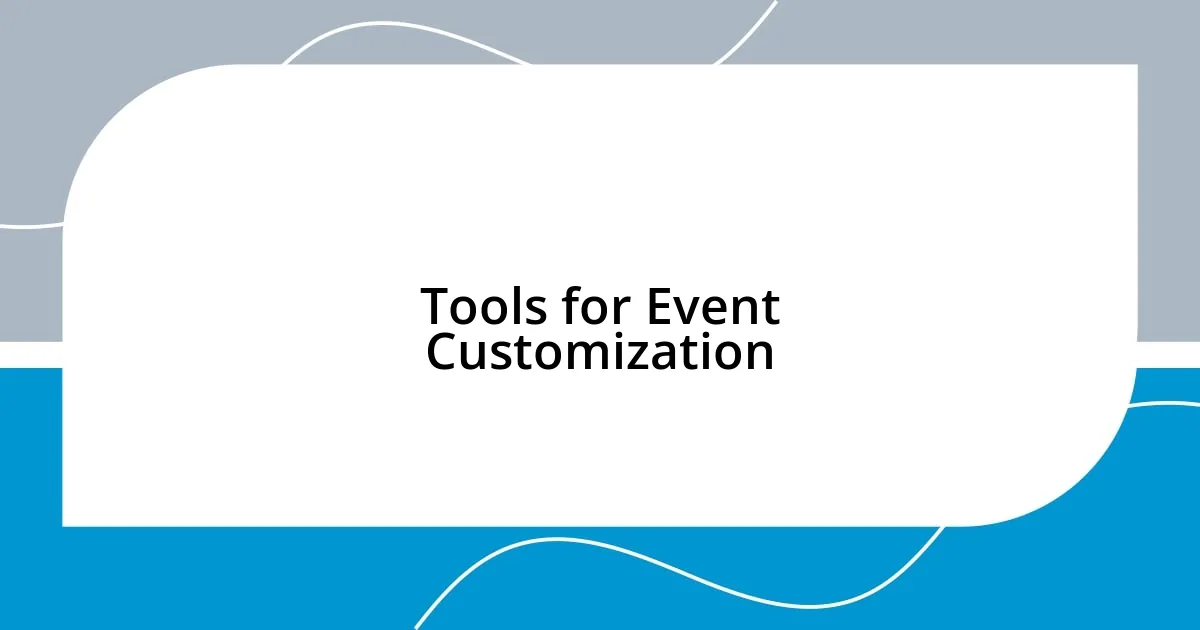
Tools for Event Customization
When it comes to customizing events, I find that the right tools can truly elevate the experience. For instance, I often use event management software that allows me to create personalized agendas for attendees. This not only helps them navigate the experience but also makes them feel empowered in their decision-making. Have you ever felt overwhelmed by a packed schedule? Imagine having the chance to handpick what you attend—it transforms the experience into one that’s tailored just for you.
Another essential tool in my toolkit is interactive event apps. These platforms allow for real-time feedback and engagement during the event. I recall a particular workshop where attendees could submit questions through the app, sparking discussions that addressed their specific concerns. This level of engagement not only makes the event feel more dynamic but also fosters a sense of community. Isn’t it refreshing when an event feels like a conversation rather than a monologue?
Finally, incorporating visual and sensory elements can’t be overlooked. I once attended an art exhibition where attendees could vote on their favorite pieces via a digital platform. Later, those results were used to create guided tours tailored to the crowd’s interests. This level of personalization enhances not just engagement but also makes the content memorable. How often do you find yourself reminiscing about an event long after it’s over? The right tools can help create lasting impressions.
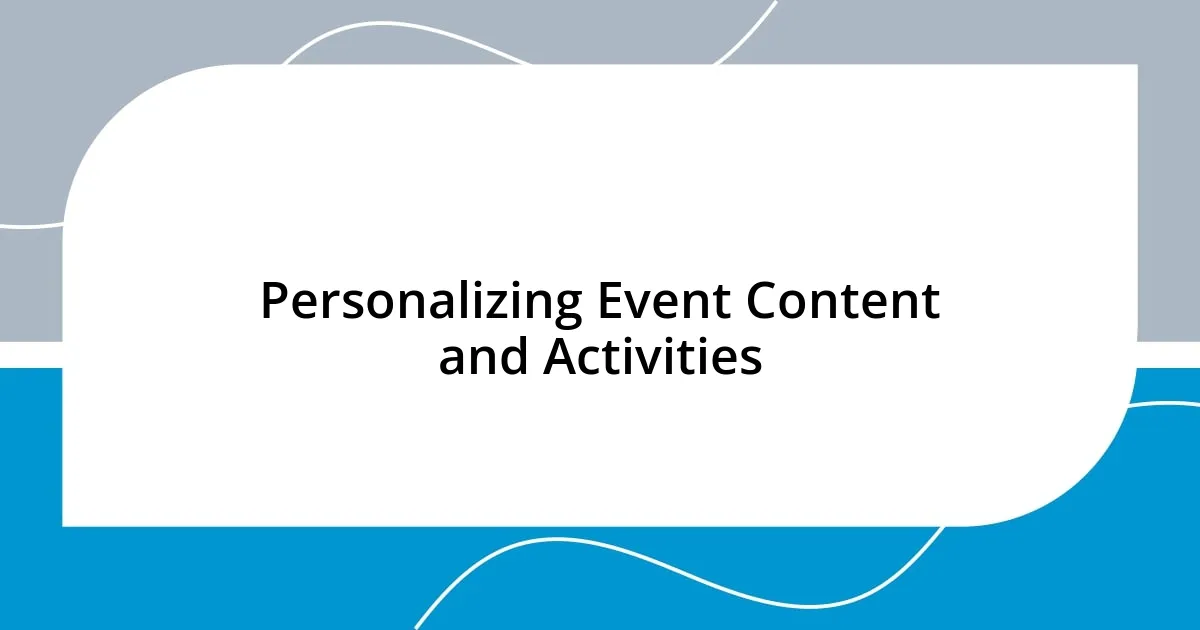
Personalizing Event Content and Activities
When it comes to personalizing event content, I really embrace the power of storytelling. In one of my experiences, I collaborated with speakers to weave in relatable anecdotes that resonated with the audience’s backgrounds. This not only captivated the attendees but also made the sessions feel more intimate. Do you remember a time when a speaker shared a story that struck a chord with you? Those moments linger long after the event is over, and they are often what attendees cherish most.
I also love adding interactive activities that cater to varied interests. At a recent networking event, I organized breakout sessions based on attendees’ preferences, allowing them to explore topics that mattered to them most. It was so rewarding to witness participants joining discussions they were truly passionate about. My takeaway was clear: when people can dive deeper into subjects they care about, the overall energy and connection in the room amplifies.
Lastly, I’ve found that infusing local culture into the event content can create a powerful sense of connection. During an international conference I helped organize, we incorporated local cuisine into the dining experience and featured guest speakers from the area. The attendees were not only able to engage with global topics but also felt a unique tie to the local community. Can you imagine how enriching it is when an event opens doors to both learning and cultural appreciation? It creates a lasting impact that attendees take home with them.
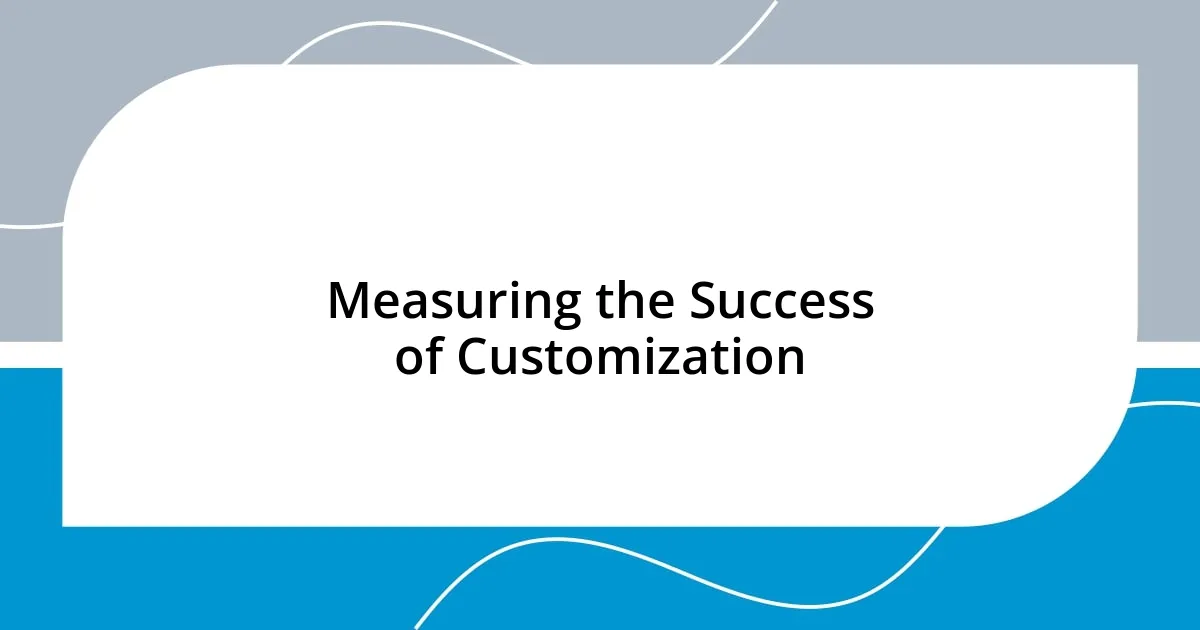
Measuring the Success of Customization
Measuring the success of customization can be quite telling. One way I gauge this is by analyzing attendee feedback through post-event surveys. I remember conducting one after a tech conference where participants shared their thoughts on the tailored sessions. The enthusiastic responses—many highlighted how much more engaged they felt—made me realize that personalized experiences resonate deeply. Have you ever thought about how a simple survey can unlock valuable insights?
Another angle I focus on is participation rates in customized activities. During a recent festival, I noticed that interactive workshops drew larger crowds than standard presentations. Seeing attendees actively engage, laugh, and contribute their ideas was a clear indication of success. Wouldn’t you agree that when people participate, it reflects the relevance of what you’ve planned?
Lastly, I like to track the lasting impact of customization by checking in with attendees months after an event. At a recent business summit, I followed up with several participants, and they not only recalled specific workshops but also mentioned how they applied what they learned to their own projects. That kind of retention is a powerful measure—it shows that the experience wasn’t just momentary but had lasting value and significance. How often do you find yourself reflecting on lessons from events long after they’ve ended? It’s experiences like these that shape our journeys.
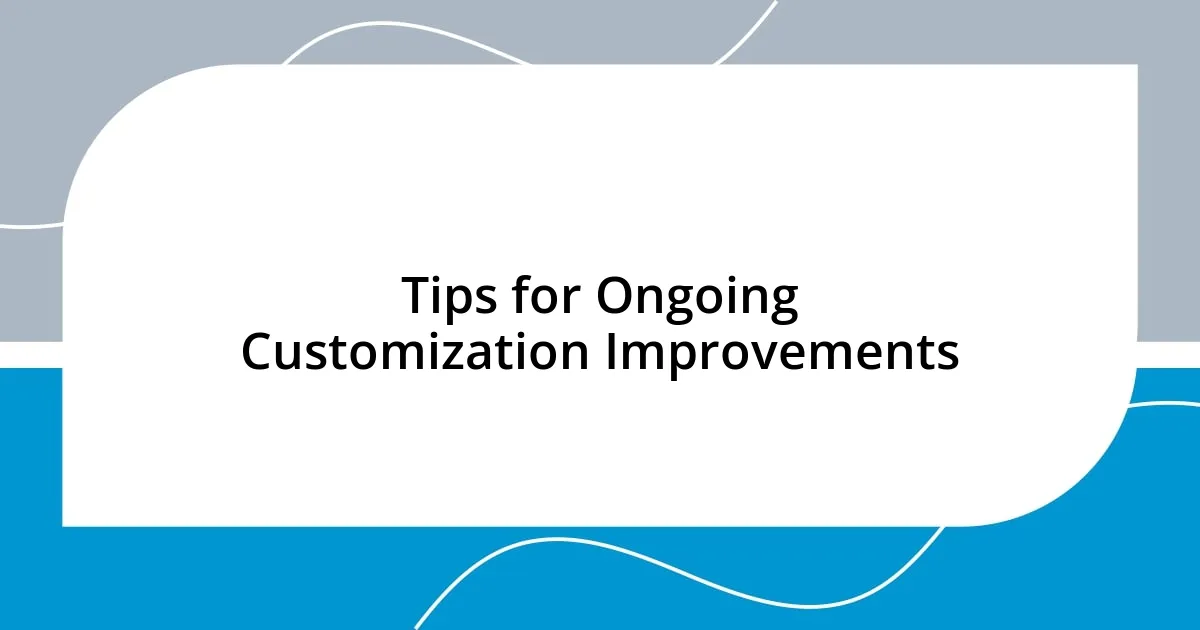
Tips for Ongoing Customization Improvements
When it comes to ongoing customization improvements, I find that embracing attendee feedback is invaluable. At one workshop, I introduced a live polling feature that gathered real-time input on breakout topics. Watching participants light up as their preferences shaped the agenda was a revelation! Have you ever experienced that rush of excitement knowing your voice made a difference? It truly elevates the collective experience.
I also prioritize testing new ideas with smaller events before scaling up. For instance, I once experimented with a “choose-your-own-adventure” format at a small gathering. Attendees could choose sessions based on their interests, and the results were incredible. The energy in the room was electric—people genuinely engaged in discussions that sparked their curiosity. It made me realize the magic that can happen when you empower individuals to steer their learning.
Monitoring trends in attendee preferences is another strategy I swear by. I remember analyzing data from past events that highlighted an increasing interest in wellness activities. Incorporating yoga sessions into a recent conference not only provided a refreshing break but also fostered connections among attendees. Reflecting on such adaptions emphasizes the importance of staying attuned to your audience’s evolving needs. Don’t you agree that if we listen closely, our attendees often tell us exactly what they want?

